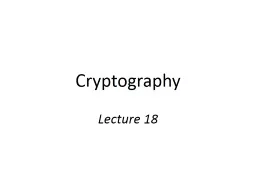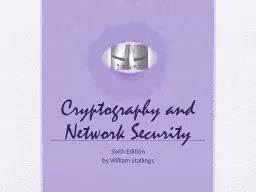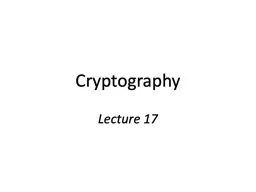PPT-Cryptography Lecture 18 Key-recovery attack, 1-round SPN
Author : volatilenestle | Published Date : 2020-06-22
Consider first the case where there is no final keymixing step Possible to get the key immediately What about a full 1round SPN Attack 1 for each possible 1 st
Presentation Embed Code
Download Presentation
Download Presentation The PPT/PDF document "Cryptography Lecture 18 Key-recovery att..." is the property of its rightful owner. Permission is granted to download and print the materials on this website for personal, non-commercial use only, and to display it on your personal computer provided you do not modify the materials and that you retain all copyright notices contained in the materials. By downloading content from our website, you accept the terms of this agreement.
Cryptography Lecture 18 Key-recovery attack, 1-round SPN: Transcript
Download Rules Of Document
"Cryptography Lecture 18 Key-recovery attack, 1-round SPN"The content belongs to its owner. You may download and print it for personal use, without modification, and keep all copyright notices. By downloading, you agree to these terms.
Related Documents














